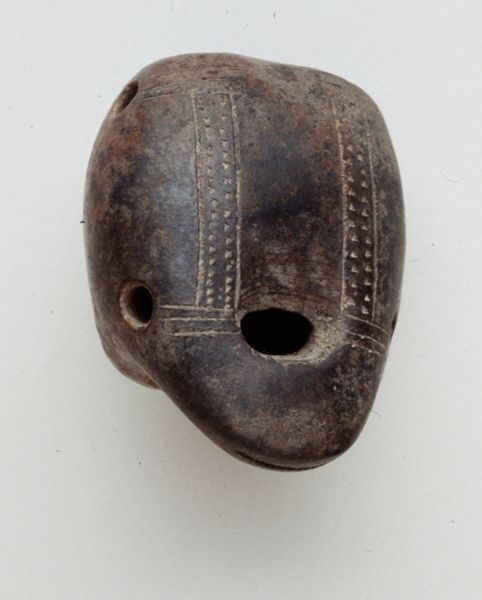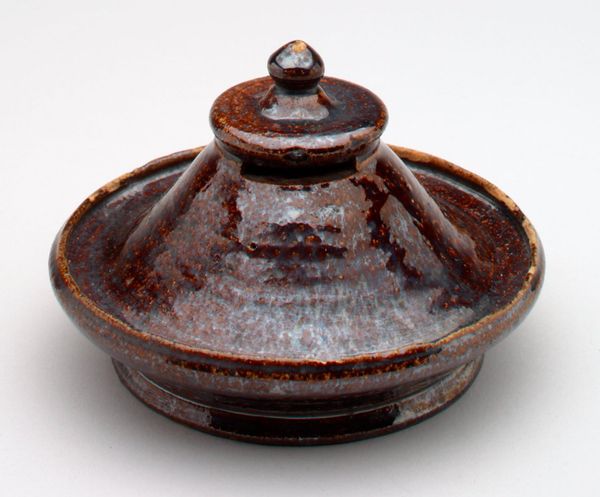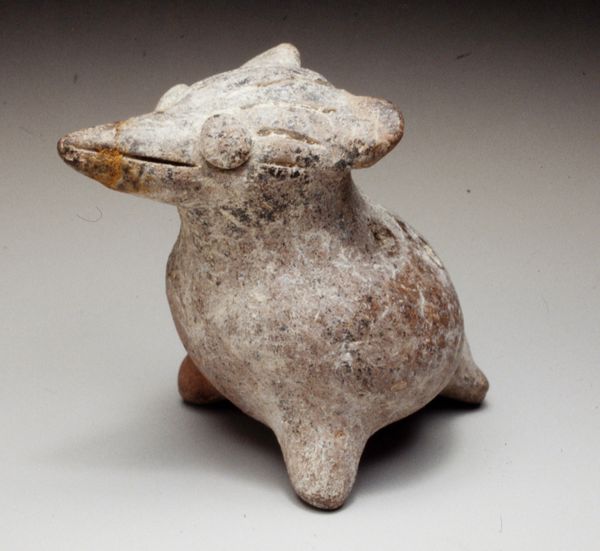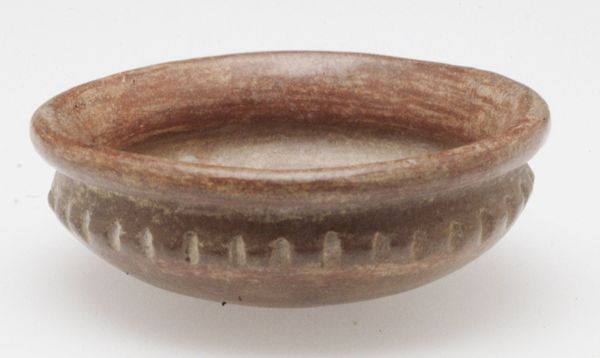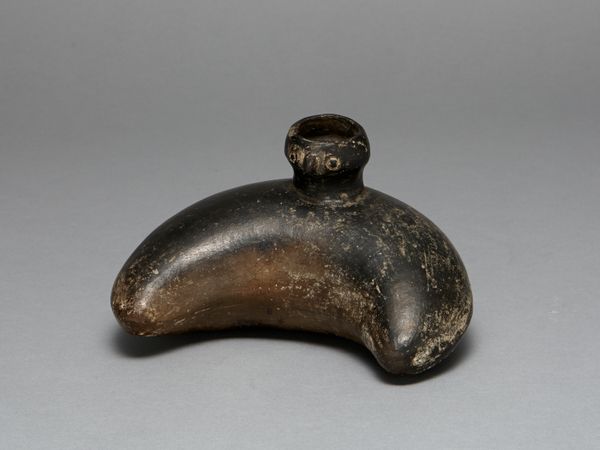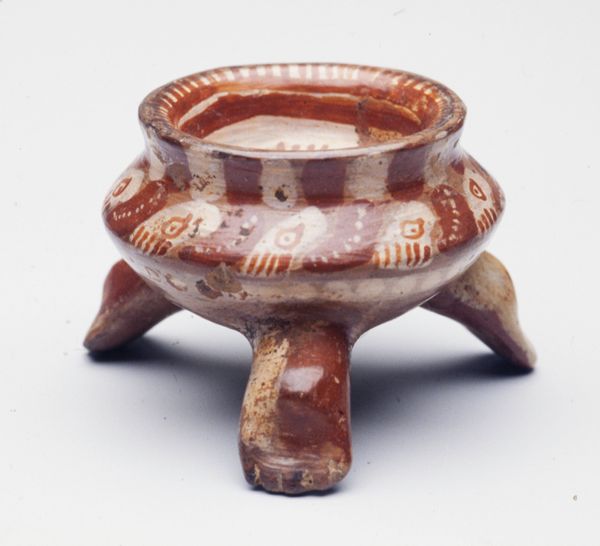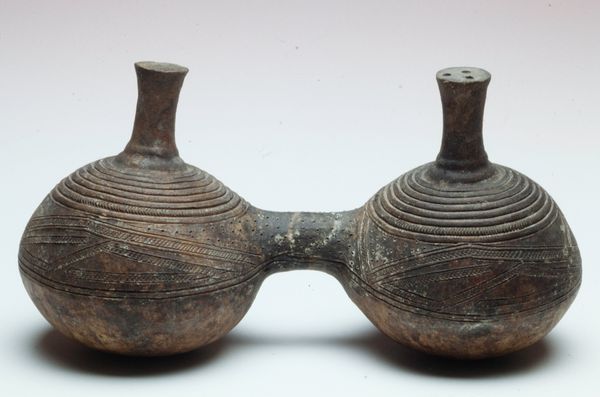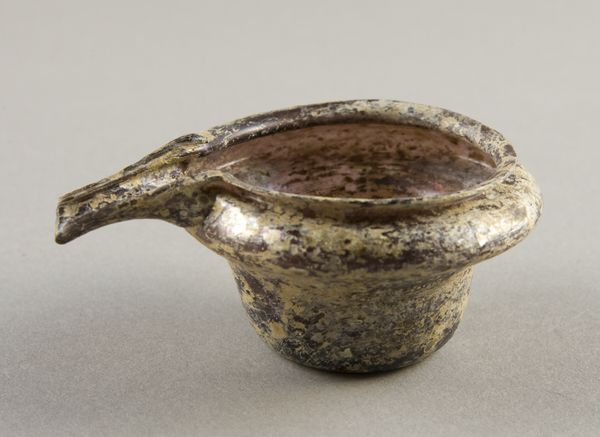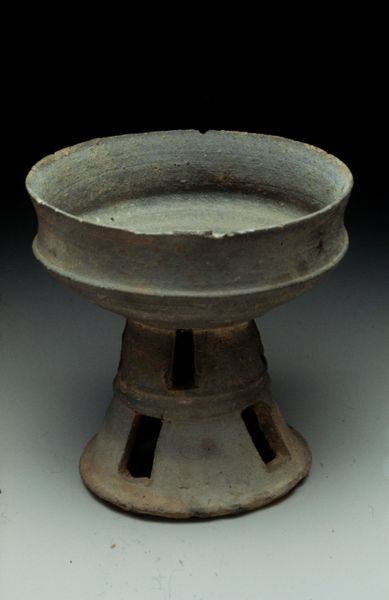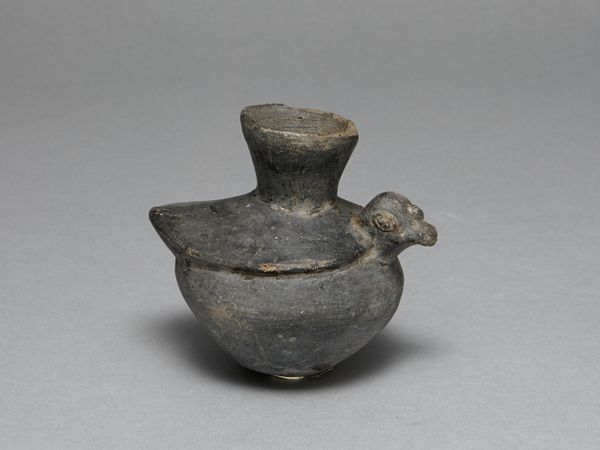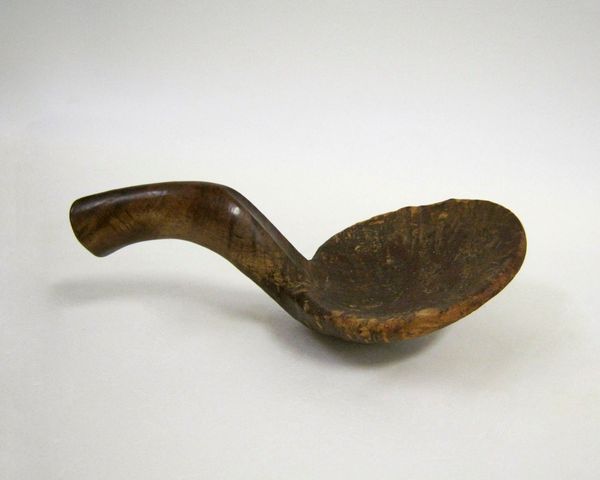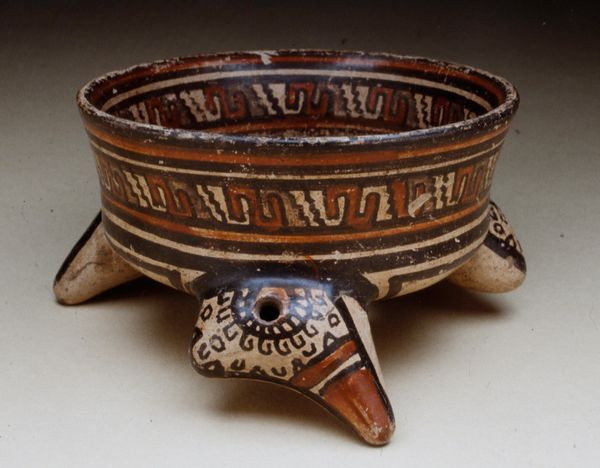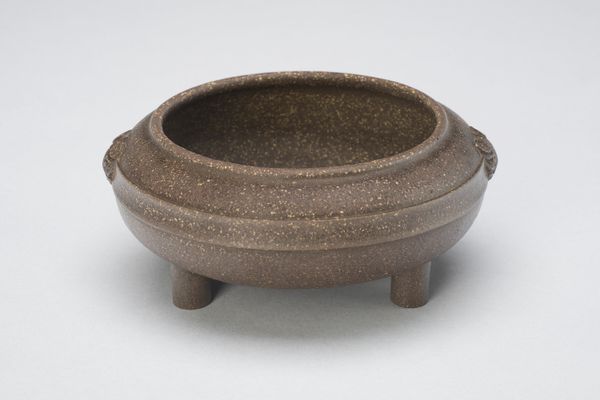
ceramic, earthenware
#
sculpture
#
ceramic
#
earthenware
#
earthenware
#
indigenous-americas
Dimensions: 3 1/2 x 6 1/4 x 6 1/4 in. (8.9 x 15.9 x 15.88 cm)
Copyright: Public Domain
Curator: Here we have the “Composite Effigy Tripod Bowl,” created sometime between 300 and 799. This ceramic piece resides here at the Minneapolis Institute of Art. Editor: The piece feels strangely mournful. It is an earthenware sculpture in muted tones, possessing a geometric and yet also organic quality. It strikes me as somehow both delicate and robust. Curator: The visual language indeed strikes a poignant chord. Crafted by an anonymous artist in the Americas, the tripod bowl melds functionality with powerful symbolism. The animal figures supporting the bowl elevate it, perhaps indicating reverence or special use within ritual practices. Editor: Thinking about it as an ancient Indigenous artwork, I see those animal figures and the circular design along the rim less as purely formal choices, and more as potentially charged representations. The animals could embody specific spiritual meanings or serve as guardians. How might its creation have served purposes tied to community identity or societal memory? Curator: Well, observing its composition—the repetition of forms, the circularity, the interplay of light and shadow—evokes a sense of balanced harmony and perhaps the cyclical nature of time, which brings forth the work's refined geometric design. Its formal arrangements, while rudimentary, point towards something of a ceremonial object. Editor: Right. And perhaps the imperfections, the signs of wear – what looks like almost a mottled pattern – tell their own story. Was the bowl used frequently? Were these motifs chosen to challenge hierarchical power structures, given what seems like this culture’s possible reverence of the animals it features? This isn't just art; it’s a testament to a community’s lived experience, reflecting social and political dimensions lost in time. Curator: The craftsmanship certainly merits a thorough study into the evolution of this culture’s ceramic artistry and technique. Editor: Yes, and understanding this artwork within its culture of origin, considering themes of collective experience and identity – provides insights into the human spirit and what has been lost in history. Curator: Perhaps by examining the object itself, we come one step closer to understanding such spirit and ancient innovation in full light.
Comments
No comments
Be the first to comment and join the conversation on the ultimate creative platform.
